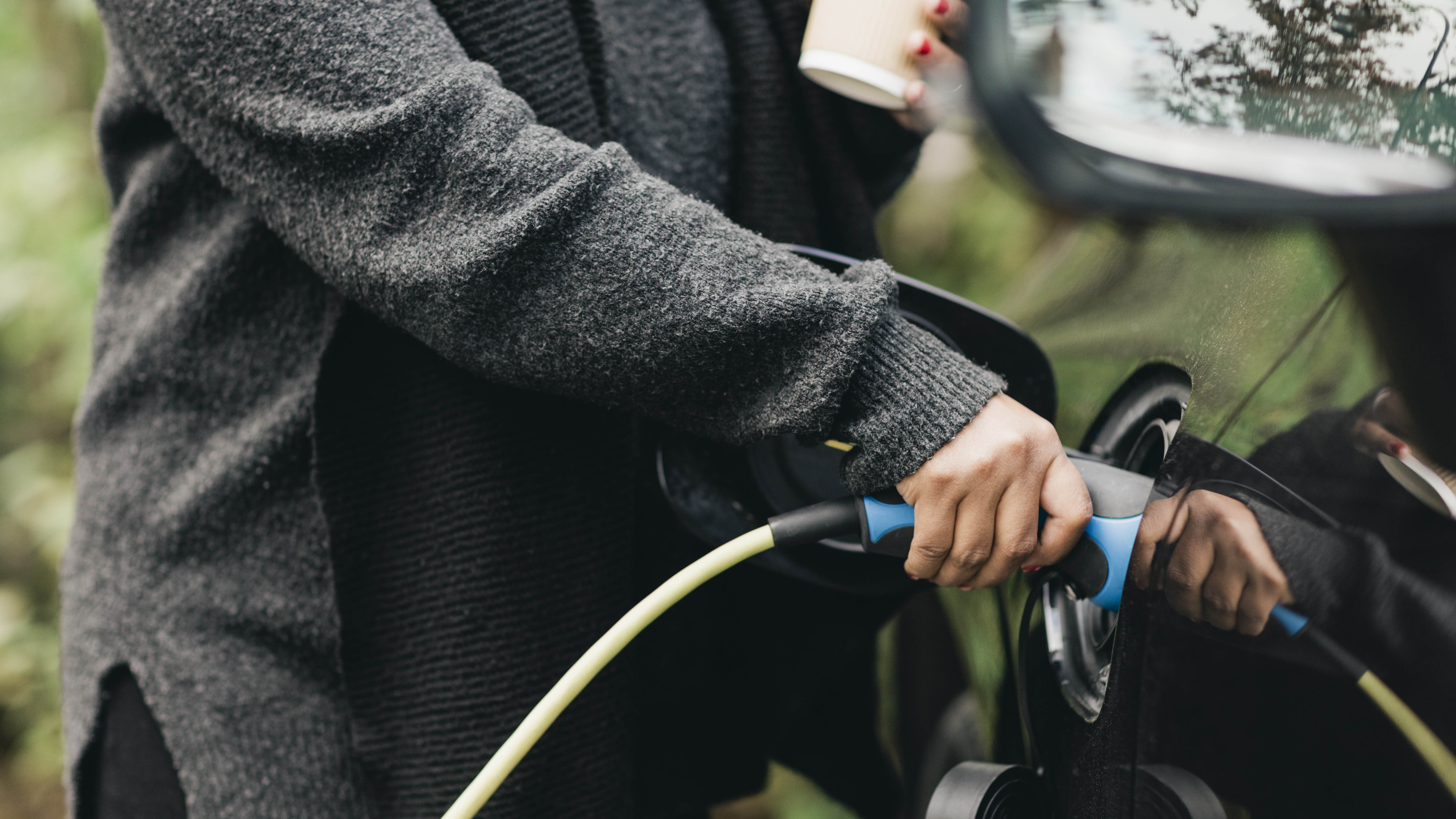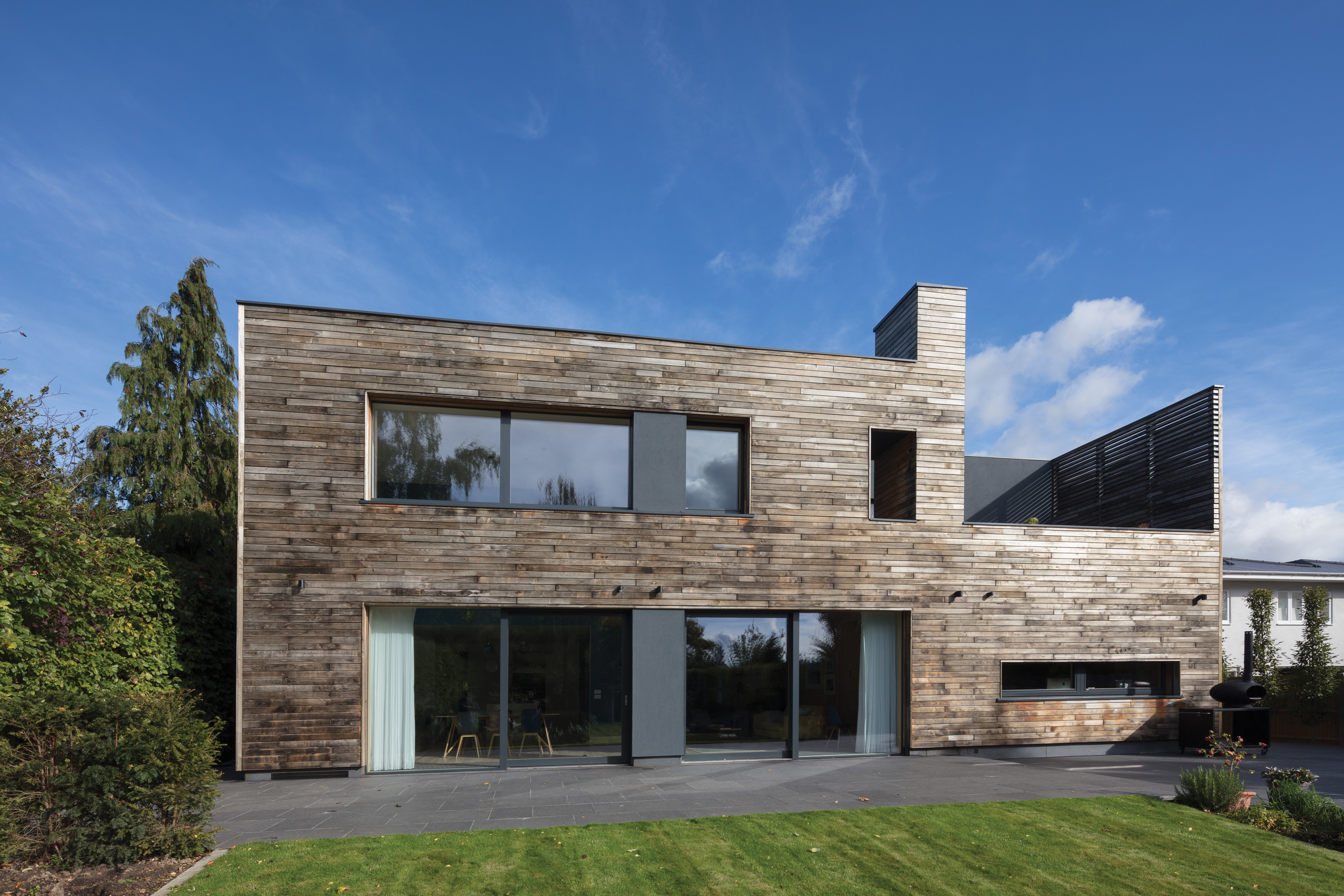What is an exhaust air heat pump and how can it reduce your heating bills?
Eco energy expert David Hilton explains what is an exhaust air heat pump and how can it cut your carbon emissions and reduce your heating bill by reusing 'waste air' in your home

Exhaust air heat pumps (EAHP), also known as heat pump ventilation or micro heat pumps, use energy from ventilated air to heat your home and/or water. This ingenious technology reuses energy from 'waste air' in your home and can reduce your energy bills in the process.
With air source heat pumps firmly on the radar of many homeowners looking for more efficient heating systems, you may be wondering how you can incorporate this technology into your own home?
Thankfully, eco energy expert David Hilton is on hand to provide all the lowdown on EAHPs. In this article, he covers everything from how they work to installation, system costs and what options are available for your home.
How does an exhaust air source heat pump work?
Exhaust air heat pumps are designed to use the air in the home as its heat source. It works by extracting heat from stale, humid air before exhausting it outside the property.
They are small heat pumps, usually using around 600 Watts of power and producing around 2kW of heat. This heat can then be transferred in two ways:
Air-to-water setup: The heat is conveyed to water, either directly or indirectly, by integrating the heat pump with a hot water cylinder. This arrangement is known as an air-to-water system.
Air-to-air setup: Alternatively, the heat can be transferred to the air for use in conjunction with a Mechanical Ventilation Heat Recovery (MVHR) system, known as an air-to-air system.
Air-to-water systems

Because exhaust air heat pumps only use around 600 watts of power to produce around 2kW of heat, they do not heat up water in the cylinder very fast, which means you may need a slightly larger store capacity, depending on the water usage patterns in your home. That said, the low energy use does make them particularly useful in maximising the generation from renewable electric generators such as photovoltaic solar PV panels.
Very often an electric vehicle charger will only turn on if there is a spare 1.4kW so this system is also useful to use the lower generation when there is not enough for the car. You will however need it to be wired into an energy diverter system.
Micro heat pumps are not a new technology as there have been small heat pumps built into hot water cylinders for many years, especially in countries where natural gas is not available for heating. Things have moved on a bit with the introduction of newer refrigerants and the development of better compressors and smart control systems.
An integrated system
The prevailing design of an exhaust air heat pump involves integrating a small heat pump into the upper part of a hot water cylinder. These integrated systems are commonly available in 200 or 300-litre volumes. This setup features two duct connections on the cylinder's top surface—one for drawing air in and the other for expelling air out.
When the water in the cylinder requires reheating, the heat pump engages by pulling air through a heat exchanger (often from the bathroom or kitchen). This air's heat is then transferred to the water storage. These types of exhaust air units have been around for a number of years and the quality of the products can differ greatly from manufacturer to manufacturer.
Air-to-water EAHPs are predominantly used for hot water only and you will need an alternative solution for space heating. There are however some occasions where this unit can also be used for space heating if the heating demand is exceptionally low.
Costs
Expect to pay around £1,200 for a simple version of a EAHP product, with costs rising to around £2,000 for newer units and even as much as around £3,000 or £4,000 for units with more connectivity and control.
Retrofit options
There are also ‘retrofit’ versions of these exhaust air heat pumps that do not have a hot water cylinder attached. The fan unit instead goes in the loft, or near the cylinder, and you run ducts from the bathroom and other wet rooms, as well as the route to outside for the stale, cold air, and then plumb it to the cylinder, most often in a parallel system. Before buying one of these systems it is worth checking that it is compatible with your existing cylinder and plumbing arrangement with a heating engineer.
These retrofit exhaust air heat pumps can cost as little as around £900 with more complex units going upwards of £4,000. Make sure you also factor in any remedial plumbing and electrical works required to connect it to existing cylinders and controls.
Air-to-air EAHP systems
Micro heat pumps are also available as air-to-air systems rather than the air-to-water options. The air-to-air units are often made to work with a MVHR unit and they are also commonly only able to do cooling. The cooling box is normally installed on top of the main MVHR fan unit and effectively makes it a taller box. The unit extracts heat from the fresh air going to the rooms in the home and dumps the heat in the stale expelled air. Some of these units can also be reversed so that heating and cooling options can be used but they are not easily retrofitted and should be planned into the ductwork design when the system is initially designed.
Exhaust air heat pumps with MVHR integration

There are also micro heat pumps that have been factory built into MVHR systems, often referred to as heat pump ventilation, and can do both heating and cooling. The heating and cooling function is done while the air is being delivered to the home so that indoor temperatures can be maintained. These systems are most effective in very low-energy homes like Passivhaus builds. For other properties, heat delivery might not suffice, requiring increased air speed, potentially leading to noise concerns.
There is an argument that if you fit one of these systems you may not need a wet heating system and therefore the cost is offset by not needing the alternative heat generator and wet emitter system such as underfloor heating or radiators. Just make sure that the design calculations have been done with your expectations in mind and that you fully understand the type of heating system that you are investing in.
Many MVHR installers are now fully versed with cooling options and you will need the MVHR installer to insulate the ducts. Duct insulation is not something that you want to add after the MVHR system has been installed.
The cost of add-on cooling units for MVHR systems varies between manufacturers, ranging from £3,000 to £5,000. Additionally, duct insulation costs between £6 to £35 per meter, depending on quality and diameter, alongside installation expenses.
Get the Homebuilding & Renovating Newsletter
Bring your dream home to life with expert advice, how to guides and design inspiration. Sign up for our newsletter and get two free tickets to a Homebuilding & Renovating Show near you.
David is a renewables and ventilation installer, with over 35 years experience, and is a long-standing contributor to Homebuilding and Renovating magazine. He is a member of the Gas Safe Register, has a Masters degree in Sustainable Architecture, and is an authority in sustainable building and energy efficiency, with extensive knowledge in building fabrics, heat recovery ventilation, renewables, and also conventional heating systems. He is also a speaker at the Homebuilding & Renovating Show.
Passionate about healthy, efficient homes, he is director of Heat and Energy Ltd. He works with architects, builders, self builders and renovators, and designs and project manages the installation of ventilation and heating systems to achieve the most energy efficient and cost effective outcome for every home.
- Gabriella DysonInteriors journalist and contributing editor

